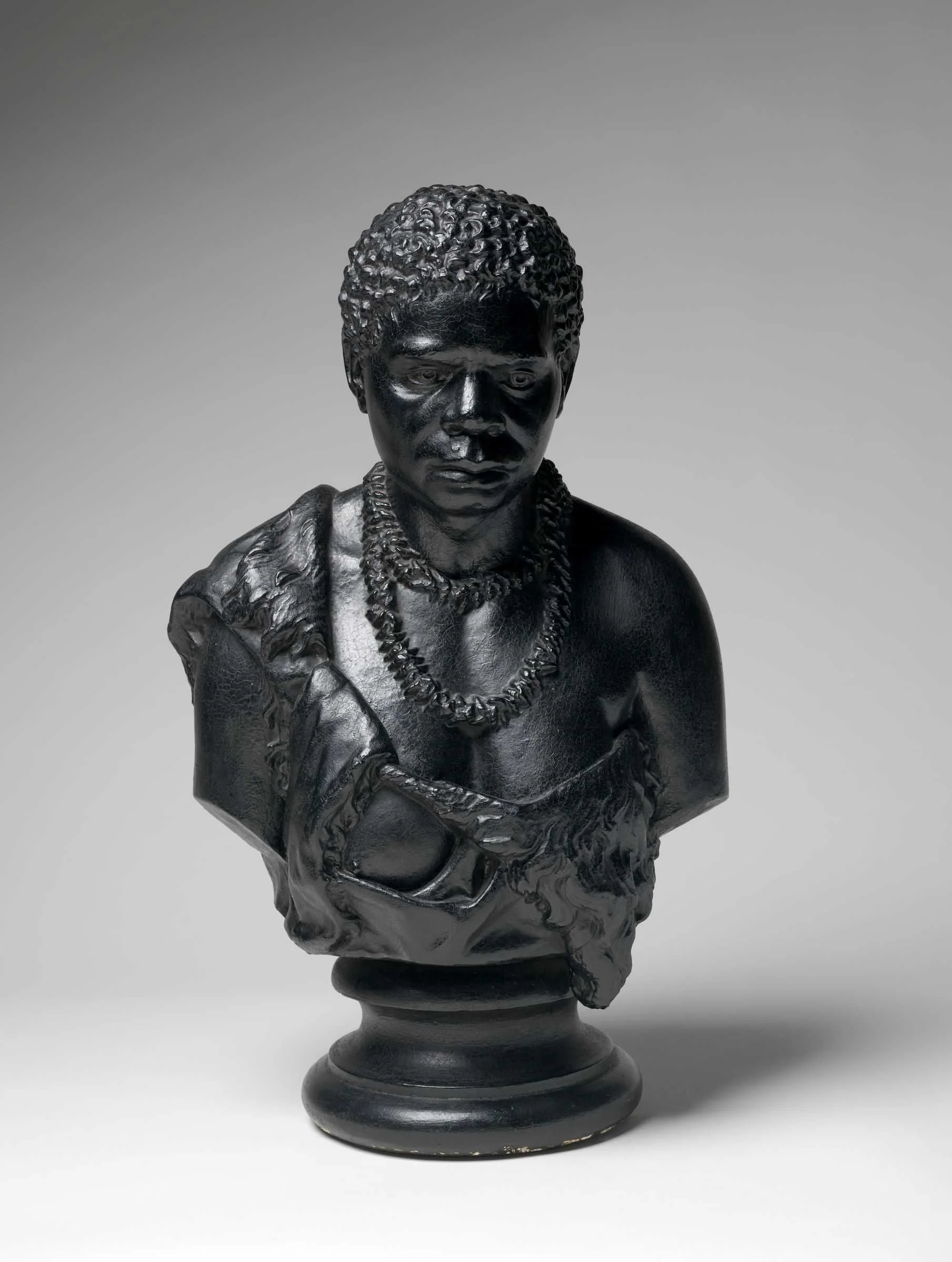
Local and global histories of Sheffield
Header image: This mural on the side of the Cutlery Works, Neepsend Lane, Sheffield, painted by artist Katy Sett, depicts anti-slavery campaigner Mary Anne Rawson, of Wincobank Hall, Sheffield, meeting African-American abolitionist Frederick Douglass on his visit to the U.K. and Ireland in 1846-1847. Photo: A. Twells, Nov 2023.
This project is also a ‘return’ to the nineteenth century and to new/old projects that I find totally absorbing and very relevant today.
These pieces are linked through a focus on the relationship between local and global history: how evidence of the global in the local throws fresh light on Sheffield history — and vice versa.
I also have a particular interest in ‘voice’: whose voice is preserved in archives? how do we give voice to people who were silenced? what does it mean to speak for yourself, or to have someone speak on your behalf? what does this relationship tell us about history?
Bust of Trukanini, a Nuennone woman from SE Tasmania and aboriginal leader, 1835-6, by Sheffield sculptor Benjamin Law. https://www.portrait.gov.au/portraits/2010.134/trucaninny-trukanini-wife-of-woureddy-wurati
Also under way…
Remembering Mrs Rawson: I have written extensively on Mary-Anne Rawson, who was a founder member of the Sheffield Female Anti-Slavery Society in 1825 and active in many other philanthropic organisations throughout her life. My interest here concerns commemoration: women are notoriously under-commemorated in Britain (and in the world) and many people in Sheffield feel justly proud of Rawson’s anti-slavery activity. How do we balance our impulse to celebrate with our knowledge that branches of British anti-slavery were pro-equality but not anti-imperial or anti-racist? How do we assess the contribution of women like MAR to progressive understandings of human rights in the C19th, especially when those understandings are in some ways at odds with what is considered progressive today?
As well as understanding Rawson’s views of the world, I am interested in how she engaged with alternative views from the period — such as those of Sheffield Chartists, for example, who had a very different perspectives on poverty and its causes; and Frederick Douglass, the famous African-American abolitionist who visited Sheffield (and stayed with Rawson at Wincobank Hall) in 1846/7, and who became increasingly critical of the (white) abolitionist movement.
Sandanee’s Dream: In my academic study, The Civilising Mission and the English Middle Class (2009), I wrote about two young West African men, Sandanee and Mahmadee, who lived for a while in the 1820s in Loxley, near Sheffield, with a Quaker missionary named John Singleton. My interest at that time was the writing of Hannah Kilham, a Sheffield Quaker who embarked on three voyages to the Gambia and Sierra Leone in West Africa, to engage in missionary work with West African people. I was trying to understand the complexity of the missionary movement whereby, by and large, people like Kilham were of the view that all peoples in the world were fundamentally equal — but that true equality could only be achieved through conversion to Christianity and adoption of western European middle-class values and practices (class is important here as well as newly-developing ideas about ‘race’ and ‘racial difference’; such self-representation was key to middle-class claims to power in the early C19th). To prepare for her travels, Kilham had sought out Sandanee and Mahamdee, two sailors who were at the time at anchor on the River Thames. She hoped they would teach her their languages and so enable her to produce Bible translations. The young men’s engagement with Christianity became central to Kilham’s and Singleton’s attempts to persuade the Society of Friends — hitherto resistant to evangelisation — of the value of missionary work. This piece returns to Sandanee and Mahmadee’s time in Sheffield, to ask how we might glean their thoughts and feelings from a one-sided archive and what their experiences might tell us about Sheffield at this time.
I plan to begin this project with Trukanini’s Voice: Hannah Law’s letters from Tasmania. This is a piece of research I was developing with my late good friend and very excellent colleague, Professor Nicola Verdon, who was killed whilst riding her bike in December 2024 (see https://nicolaverdonhistorian.wordpress.com ). Nicola and I shared a love of Australian landscapes and very much enjoyed teaching a module on Australian history.
Sheffield emigrant Hannah Law’s letters from Tasmania (then Van Dieman’s Land) in the 1830s and 1840s are interesting for many reasons, not least their insights into the process of settlement and colonialism, and their interlinking — through naming, horticulture, artefacts and more — of Sheffield with Hobart.
Law’s letters are also remarkable for her account of a casual conversation between herself and Trukanini, a Nuennone woman from SE Tasmania, who was very prominent in British attempts to ‘concilate’ aboriginal peoples resisting the thieving of their land in these very brutal decades.
This little project will have its first outing at a conference at SHU in April/May 2026 to commemorate Nicola’s work as a rural historian.
